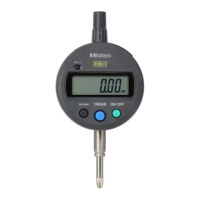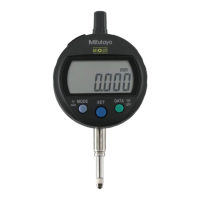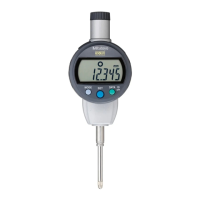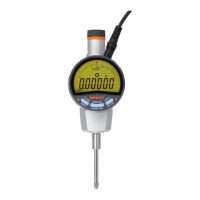4. DATA INPUT/OUTPUT
No. 99MAH016B
4.2 RS-232 Input/Output
Connect this instrument with an external device such as a PC using the RS-232 dedicated
cable (optional accessory). With this connection it is possible to perform initial setup of the
instrument, control of switching a measurement mode, etc., and processing such as
measurement data transfer.
Also, multiple Digimatic indicators can be controlled from one RS-232 port on the external
device by setting ID No. on each indicator.
4.2.1 Connecting procedure
1 Switch the I/O format to RS-232 in the Parameter Setup mode, and then set the
communication speed (baud rate), parity, and data bit according to the used external
device. (Refer to section 3.2.)
2 Replace the input/output connector cap and plug the cable securely. (The replaced
cap should be kept in a small bag to prevent losses.)
Before a cable is connected with or disconnected, be sure to turn off this instrument.
If data input/output is not performed properly, there is a possibility of an error in
communication setup. Check the settings of this instrument and the connected device.
For the method of switching the input/output format, refer to the section “3.2 Parameter
Setup Mode”.
4.2.2 I/O connector
Connector specification: D-sub 9-pin female (receptacle)/inch thread specification
The above table lists the pin assignment of the dedicated cable connector.
4.2.3 Communication specification
DCE (Modem definition),
Dedicated cable must be used.
Communication speed (bit rate)
7 or 8bit / ASCII / Upper case
CTS, DSR, or no control sequence
For information about the switching method of bit rate, data length, and parity control,
refer to section 3.2.5.

